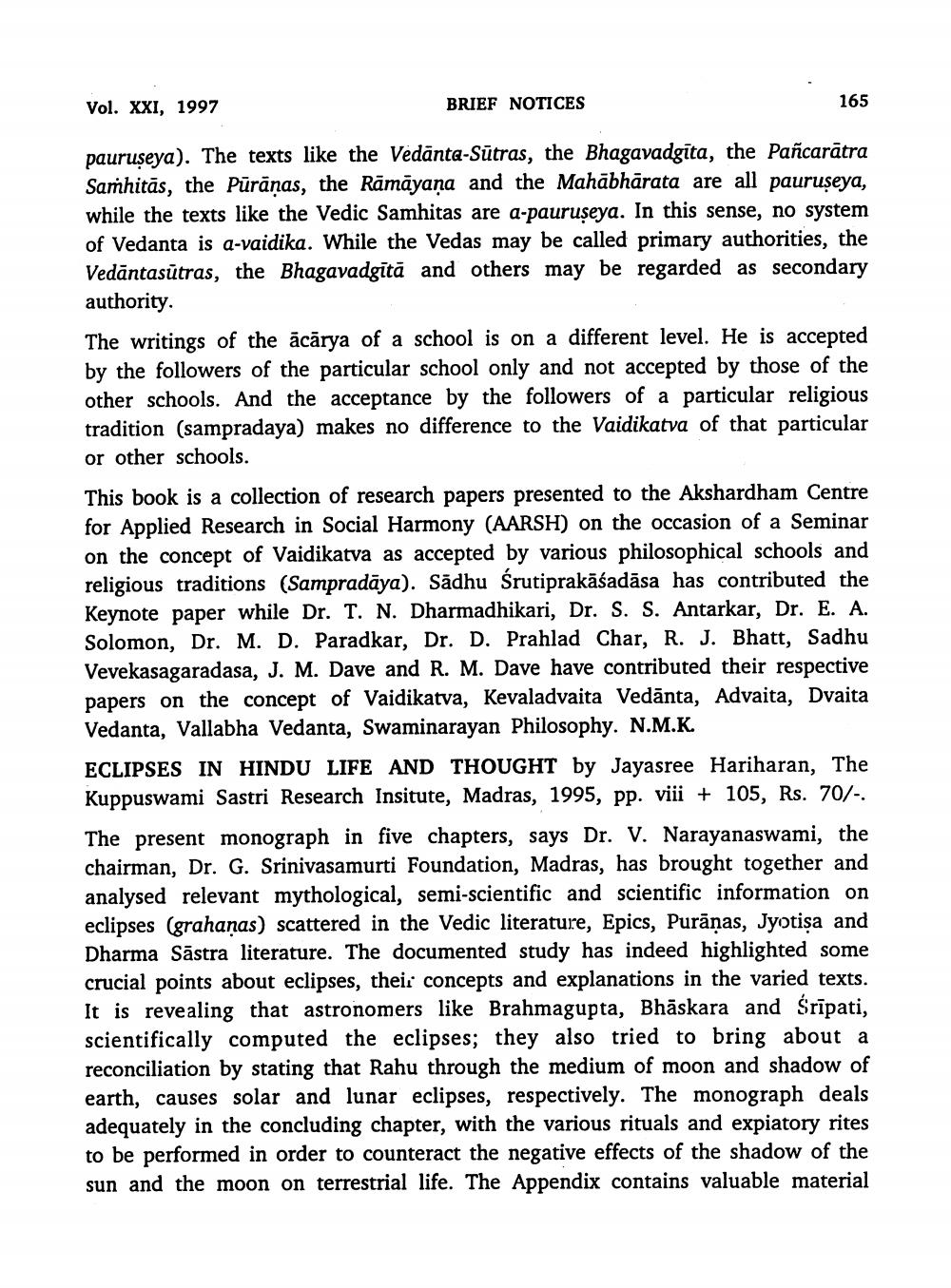________________
Vol. XXI, 1997
BRIEF NOTICES
165
pauruseya). The texts like the Vedānta-Sūtras, the Bhagavadgīta, the Pañcarātra Samhitās, the Pūrāņas, the Rāmāyaṇa and the Mahābhārata are all pauruseya, while the texts like the Vedic Samhitas are a-pauruseya. In this sense, no system of Vedanta is a-vaidika. While the Vedas may be called primary authorities, the Vedāntasutras, the Bhagavadgitā and others may be regarded as secondary authority.
The writings of the ācārya of a school is on a different level. He is accepted by the followers of the particular school only and not accepted by those of the other schools. And the acceptance by the followers of a particular religious tradition (sampradaya) makes no difference to the Vaidikatva of that particular or other schools.
This book is a collection of research papers presented to the Akshardham Centre for Applied Research in Social Harmony (AARSH) on the occasion of a Seminar on the concept of Vaidikatva as accepted by various philosophical schools and religious traditions (Sampradāya). Sadhu Śrutiprakāśadāsa has contributed the Keynote paper while Dr. T. N. Dharmadhikari, Dr. S. S. Antarkar, Dr. E. A. Solomon, Dr. M. D. Paradkar, Dr. D. Prahlad Char, R. J. Bhatt, Sadhu Vevekasagaradasa, J. M. Dave and R. M. Dave have contributed their respective papers on the concept of Vaidikatva, Kevaladvaita Vedānta, Advaita, Dvaita Vedanta, Vallabha Vedanta, Swaminarayan Philosophy. N.M.K.
ECLIPSES IN HINDU LIFE AND THOUGHT by Jayasree Hariharan, The Kuppuswami Sastri Research Insitute, Madras, 1995, pp. viii + 105, Rs. 70/-. The present monograph in five chapters, says Dr. V. Narayanaswami, the chairman, Dr. G. Srinivasamurti Foundation, Madras, has brought together and analysed relevant mythological, semi-scientific and scientific information on eclipses (grahanas) scattered in the Vedic literature, Epics, Purānas, Jyotisa and Dharma Sāstra literature. The documented study has indeed highlighted some crucial points about eclipses, their concepts and explanations in the varied texts. It is revealing that astronomers like Brahmagupta, Bhāskara and Śrīpati, scientifically computed the eclipses; they also tried to bring about a reconciliation by stating that Rahu through the medium of moon and shadow of earth, causes solar and lunar eclipses, respectively. The monograph deals adequately in the concluding chapter, with the various rituals and expiatory rites to be performed in order to counteract the negative effects of the shadow of the sun and the moon on terrestrial life. The Appendix contains valuable material




